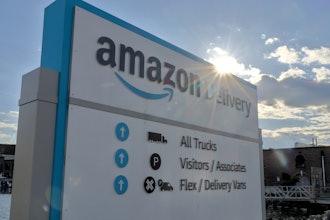The mobile revolution is changing the way customers buy products and services, and it’s also changing the way companies engage potential customers.
In today’s economic climate companies are asked to do more with less. Companies that have an online presence and engage in cross-channel retailing must have the back office systems to support the multiple avenues in which the business engages its customers. The traditional model of a bricks-and-mortar store is just the front end of what the customer sees.
By 2015, it’s estimated that shoppers from around the world will spend about $119 billion on goods and services bought via their mobile phones, according to a study by ABI Research released this past February. In the United States alone, mobile shopping rose from $396 million in 2008 to $1.2 billion in 2009, and mobile campaign spending also increased by 25 to 30% over the past year, with companies shelling out just under $313 million, according to the same study. Senior Analyst Mark Beccue, said that he’s forecasting U.S. sales to reach about $2.2 billion in 2011.
Customer’s expectations have increased due to the efficiency provided by leading retailers such as Amazon, Macy’s, Walmart, BestBuy, and others that have treated customers to real-time inventory levels when ordering. Customers expect to see what is in stock, how many, when it is available, what delivery is possible, if any are on order, what are the expected shipping costs, how long it will take to be delivered, by what means, possible price comparisons among other retailers for the same item, and the final cost to you are now expected as standard customer information for customers to buy.
As a retailer, wholesaler, or any B2B/B2C type of business, are your systems ready for the mobile boom? The sale of smartphones have increased in the first half of 2010 which empowers consumers and professionals to do more and be more productive using their smartphone. If a business professional uses their phone to change a reservation or flight while in-transit or a customer actually buying a product from a website, is your infrastructure ready to handle this additional traffic. Furthermore, is it able to handle the additional administration created and the support of mobile enabled applications? Does it add to infrastructure costs or the cost to implement mobile applications to increase customer service? These are all questions that proactive organizations should start to ponder.
Certain applications are ahead of the curve in regard to mobile usage. Social networks, and CRM especially have become very smartphone friendly and some company’s have shifted a majority of their marketing towards the mobile market. With the advent of the App Store from Apple and the Droid Market for android customers more applications are making it easier to connect using the smartphone. Certain Canadian banks have already ported their online banking applications to the cloud through smartphones. Bill payments and transfers can all be done with your cell phone now.
The mobile revolution is also changing the way customers buy products and services. The use of social media is influencing per purchasing and shifting the power to the customer, not the organization. Apps such as scanning a barcode from your phone to get on-line reviews and competitive price quotes are quickly beginning to catch on.
Namely, there are three winners here: The consumers for ease of use, the cellular companies for all the extra data packages that will be needed, and the phone manufacturers. Consequently this increase in handset sales should cause the hardware suppliers to notice that customer is still king and that they must increase their customer service efforts and support. They may even use the very handsets as the entry point to their customer service portals.
For more information, visit www.eval-source.com.


















